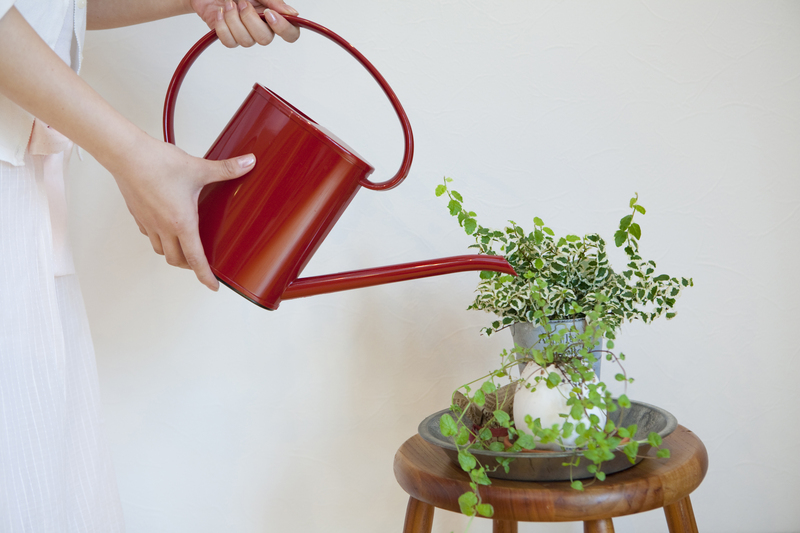Secrets to Growing Orchids: From Beginners to Experts
Posted on 19/05/2025
Secrets to Growing Orchids: From Beginners to Experts
Orchids have captivated plant lovers for centuries with their exotic beauty, unique forms, and striking colors. Whether you're a beginner embarking on your first orchid journey or an expert looking to unlock advanced techniques, this comprehensive guide will unveil the secrets to successful orchid growing. You'll learn how to choose the best orchid varieties, provide optimal care, and maintain healthy, flowering plants year after year.
Understanding Orchids: A Brief Overview
Orchids are among the largest and most diverse families in the plant kingdom, with over 25,000 naturally occurring species and more than 100,000 hybrids. These stunning flowers have adapted to nearly every environment, from tropical rainforests to alpine peaks, making them both fascinating and rewarding to grow.
- Epiphytic Orchids: Grow on trees, using their roots to anchor themselves and absorb moisture from the air.
- Terrestrial Orchids: Grow in soil, similar to traditional houseplants.
- Sympodial Orchids: Have multiple growth points (pseudobulbs) and grow horizontally.
- Monopodial Orchids: Grow upward from a single stem.
Understanding the basic types of orchids will help you choose the best ones for your skill level and environment.

Choosing the Best Orchids for Your Skill Level
Top Beginner-Friendly Orchid Varieties
If you're new to orchid cultivation, start with resilient, easy-to-grow types that forgive occasional mistakes. Here are the top choices:
- Phalaenopsis (Moth Orchid): Widely available, forgiving, and blooms for months.
- Cattleya: Known for their showy flowers and pleasant fragrance.
- Dendrobium: Versatile and hardy, suitable for various climates.
- Oncidium (Dancing Lady): Flowers appear like clusters of dancers; needs bright, filtered light.
Advanced Varieties for Orchid Experts
More experienced growers may enjoy the challenge of rarer, demanding orchids:
- Vanda: Large, vibrant blooms but require high humidity and frequent watering.
- Miltoniopsis (Pansy Orchid): Needs cool temperatures and constant moisture.
- Paphiopedilum (Lady's Slipper): Thrives in low light but needs careful watering.
Setting the Stage: Creating the Perfect Orchid Environment
The Importance of Light
Light is one of the most critical secrets to growing healthy orchids. While requirements vary by species:
- Phalaenopsis: Thrives in bright, indirect light. Avoid direct sun, which can scorch leaves.
- Cattleya & Oncidium: Need more light. A south or east-facing window is ideal, but softened by sheer curtains.
- Paphiopedilum: Prefers shadier conditions.
Pro Tip: If you notice yellowish leaves, it may be too much light; dark green leaves can signal too little light.
Temperature and Humidity Requirements
- Most indoor orchids: Prefer daytime temps between 65-80?F (18-27?C) and night temps of 55-65?F (13-18?C).
- Humidity: Orchids need 40%-70%. Use a humidifier or humidity tray in dry environments.
Hint: Group your orchids together to raise humidity naturally, or mist them in the morning.
Proper Air Circulation
Good airflow helps prevent disease and strengthens plants. Place a small fan nearby, but avoid direct drafts.
Potting and Media: The Foundation of Successful Orchid Growing
Choosing the Right Pots
Orchids typically do better in containers with plenty of drainage holes. Plastic or clay pots are popular choices. Clear pots allow you to easily monitor root health.
Best Orchid Potting Media
Traditional soil is unsuitable for most orchids. Instead, opt for:
- Fir bark: Provides airflow and retains some moisture
- Sphagnum moss: Holds more water, ideal for seedlings or drier homes
- Perlite or charcoal: Improve drainage
- Coconut husk: An eco-friendly alternative with good moisture retention
Repot every 1-2 years, or when the media breaks down, to prevent root rot and encourage strong growth.
Watering Orchids: Mastering the Art
Improper watering is the leading cause of orchid failure, especially for beginners. Learn these key watering secrets:
- Let roots breathe: Most orchids prefer to dry slightly between watering. Check by inserting a finger into the media--if it feels dry, water thoroughly.
- Use tepid, non-softened water: Orchids dislike salts and cold water can shock roots.
- Water in the morning: Reduces the risk of fungal disease.
- Avoid water sitting in the crown (leaf base): This can lead to deadly rot.
Tip: It's better to underwater than overwater. Wilted leaves from dryness bounce back; rot from overwatering usually kills the plant.
Feeding Your Orchids: Fertilizer Secrets
Orchids are not heavy feeders, but regular, diluted fertilizer promotes healthy growth and abundant blooms.
The "Weakly, Weekly" Method
- Use a balanced, water-soluble fertilizer (20-20-20) once a week at 1/4 to 1/2 strength.
- Flush with plain water once a month to remove salt build-up.
- Switch to a bloom-boost fertilizer (high in phosphorus) when flower spikes emerge.
If unsure, always err on the side of caution--over-fertilizing can burn delicate roots.
Common Challenges and Proven Solutions
Troubleshooting Common Orchid Problems
- Wilting Blooms: Usually caused by underwatering, sudden temperature changes, or old age. Cut back spent spikes to encourage new ones.
- Yellow Leaves: Could indicate too much light, root issues, or natural leaf shedding. Check roots for rot or desiccation.
- Pests: Orchids can host mealybugs, scale, or spider mites. Wipe leaves with soapy water or neem oil.
- Root Rot: Overwatering or poor drainage are the usual suspects. Cut away affected roots and repot in fresh media.
Encouraging Reluctant Orchids to Bloom
- Provide a temperature drop at night: Many orchids, especially Phalaenopsis, initiate spikes when nights are 10?F (5?C) cooler than days.
- Optimize light exposure: Move to brighter (but not hot) window if growth is lush but no flowers.
- Maintain the right feeding cycle: Switch to a bloom-boost formula as days shorten.
Repotting Orchids: When and How
Repotting is essential for root health and long-term growth. The best times are after flowering or when new roots/bulbs appear.
- Remove the orchid from its old pot and gently shake off old media.
- Trim away any dead or damaged roots with sterilized scissors.
- Place the orchid in fresh media, ensuring the base sits at the same height as before.
- Water lightly the first week to help roots adjust.
Repotting tip: Always use clean tools to avoid spreading disease, and never reuse old, decomposed bark.
Advanced Orchid Care Tips for Experts
If you've mastered the basics, unlock the next level with these expert techniques:
- Hydroponic Orchid Growing (semi-hydroponics): Cultivate orchids in LECA (clay balls) with a reservoir system for consistent moisture and airflow.
- Custom Light Setups: Use LED grow lights for year-round blooms, especially in low-light homes.
- Hand Pollination: For rare or hybrid orchids, hand-pollinate flowers to create custom crosses.
- Pseudobulb Care: For sympodial orchids, allow old pseudobulbs to remain--they store water for droughts and emergencies.
- Division and Propagation: Carefully divide mature orchids during repotting to expand your collection or share with friends.
Displaying Orchids: Home Decor Inspiration
Orchids can turn any home or office into an oasis of calm and beauty. Try these creative display ideas:
- Hanging Orchids: Mount epiphytic orchids like Vandas or Dendrobiums on driftwood or cork boards for a natural look.
- Group by Size or Color: Arrange orchids in clusters on shelves or windowsills for maximum impact.
- Orchid Terrariums: Miniature (Jewel orchids) thrive in glass enclosures with stable humidity.

FAQs: Growing Orchids at Home
How often should I water my orchid?
This depends on the type, potting media, and climate. Generally, once a week--but always check the media and roots first!
Why aren't my orchids blooming?
Lack of light, improper feeding, or insufficient nighttime temperature drops are the usual reasons. Review the care conditions and adjust accordingly.
Can I grow orchids outdoors?
Yes! Many orchids can summer outdoors in warm, sheltered spots but must be protected from frost, strong sun, and heavy rain.
Conclusion: Making the Most of Your Orchid Journey
Growing orchids is both an art and a science. By understanding your plant's unique needs and following these proven secrets to growing orchids, you will enjoy vibrant blooms for years to come. Whether you're nurturing your first Phalaenopsis or propagating rare tropical species, the joy of watching an orchid thrive is incomparable.
- Start with easy varieties, master foundations, and don't be afraid to experiment as you gain confidence.
- Pay attention to roots and leaves-- they will tell you everything about your orchid's health.
- Celebrate every spike and bloom-- each is a testament to your growing expertise.
Embark on your orchid adventure today--these enchanting plants reward patience and care with some of nature's most spectacular flowers!

